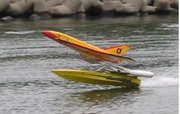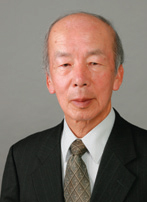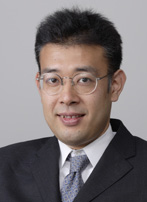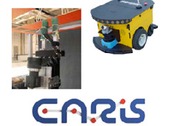Strategic design before you start
The Ohkami and Urago Group is a small melting pot, which designs delightful and collaborative societies across age, specialty, and culture. People in the lab work on an extraordinary range of themes, including; multibody dynamics of human body, software IV &V, optimization of rendezvous docking system; sub-orbital spaceship and its horizontal takeoff system from sea, shape measurement of rigid object from image, inter-relational motion of human body, and policy design about male female collaboration. The lab members also visited counterparts at the University of British Columbia in Vancouver to exchange opinions.
 Prototype spaceship built by the Faculty of Science and Technology, Keio University
Prototype spaceship built by the Faculty of Science and Technology, Keio University
In this article, we look at the design of sub-orbital spaceships. The group studies what would be required for space travel to be viable as a tourism business. The basic trip that they envision would bring the passenger to an altitude of 100 km, which is considered to be space, for approximately 10 minutes of weightlessness. The operator would offer two flights per week, passengers would require no special training, and takeoffs and landings would be horizontal from the surface of the ocean. It is also assumed that sub-orbital spaceships would be reusable without separating any major parts.
On September 12 and 13, the lab held an overnight camp that brought together SDM's unique combination of working students and new graduates and students entering in the spring and fall terms.
Research by Mr. Hiromichi Yasuoka, a researcher at the SDM Research Institute
Mr. Yasuoka is the first doctorate graduate from SDM. His research focuses on management and assessment methods for business using enterprise currencies (points and e-money). He earned his doctorate with a thesis providing guidelines on the design of new alliance-based enterprises using systems engineering techniques (OPM, CACV, ISM, Pugh Selection etc.) to systematize enterprise currencies and chart pathways for their development.
The Japanese enterprise currency market has grown far more quickly than in other countries and continues to expand rapidly. For example, the government of Japan introduced the "Eco-Point" program as a means of combating global warming. This is the first time anywhere in the world where enterpise currencies are funded by a government. Prior to this, currencies developed as "circular economic systems," in which points were converted to e-money, or points granted for the use of e-money so that the two were mutually interdependent. The thesis will contribute to industrial development by providing a comprehensive, systematic overview and assessment of the business based on this model.
Example of media coverage: December 8, 2009 Extra Edition of Weekly Economist
Joint research with University of British Columbia (Canada)
Under the agreement on academic linkage and collaboration signed with the University of British Columbia (Vancouver, Canada) in 2005, we have exchanged letter of cooperation with the "Collaborative Advanced Robotics and Intelligent Systems Laboratory (CARIS) " led by Professor Croft of the Department of Mechanical Engineering. Based on the letter, we have started exchanging visiting researchers. Beginning mid-December, two students, one doctorate and one master student, will visit CARIS to participate in the analysis of biometrics and kinesiology experiments. In future we plan to add a theme on handling robots for indefinite objects.

Professor Yoshiaki Ohkami
SDM Dean, former Research Director at the National Space Development Agency; Areas of expertise: Design and management of largescale space systems, strategic systems engineering

Associate Professor Masataka Urago
Former Assistant Professor, Tokyo Institute of Technology
Areas of expertise: "Modeling and simulation of largescale complex systems"


